Lenovo Ideapad 520 review – a big design and hardware overhaul

When Lenovo first launched the Ideapad 510, we were pretty impressed by the performance and features it has for the asking price. Luckily, the new Ideapad 520 hasn’t steered away from this concept and in fact, we see a handful of improvements over the last generation without the price bump. The new generation offers better build quality, a good choice of materials making it feel more premium, updated hardware and keeps the IPS panel, which was one of the key selling points of its predecessor. Still, all of this comes at a reasonable price.
The laptop comes with updated hardware that includes the new Kaby Lake-R generation of CPUs, which in our case is a Core i5-8250U paired with NVIDIA GeForce MX150 and 8GB of DDR4-2400. What’s interesting, the Ideapad 520 now has an M.2 SSD slot but it’s rather questionable whether or not you can use it. You will find out why further the review. In any case, this is a good upgrade from the previous Ideapad 510 and we would really like to see the quality of the new IPS screen as well and how it stacks against its predecessor.
Contents
- Retail package
- Design and construction
- Disassembly, maintenance and upgrade options
- Display quality
- PWM (Screen flickering)
- Buy our display profiles
- Sound
- Specs sheet
- Lenovo Ideapad 520 configurations
- Software
- Battery
- CPU – Intel Core i5-8250U
- GPU – NVIDIA GeForce MX150 (2GB GDDR5)
- Gaming tests
- Temperatures
- Verdict
Retail package
We received the laptop without a box and a charger so we can’t say for sure what the retail package will contain. But the usual user manuals and AC adapter should be there.
Design and construction
On contrary to the last year’s model, the Ideapad 520’s order of the day is aluminum. It can be found on the lid and around the interior but the bottom piece remains plastic. We are happy to report that this change has lead to better case stability and better feel overall. Interestingly, this hasn’t affected the weight and portability. The notebook is still around 22.9 mm thin and weighs just about 2.2 kg – almost identical to its predecessor.
As we mentioned, the lid is made of anodized aluminum sheet that provides quite the sturdiness. When we press the lid in the middle, it gives in ever so slightly – deformation is almost unnoticeable. It’s also pretty resistant to torsion while the single-hinge design provides smooth opening up to 180-degree with just one hand. We noticed a slight creak, though, but we doubt this will be any problem in the future. It’s possible that this is due to the early engineering sample. The bottom, on the other hand, is made of plastic imitating anodized aluminum and provides some grills for the extra airflow.
The sides accommodate all the usual connectors, which are well-distributed along the left and right side. The left side has the RJ-45 port, HDMI, two USB 3.0, one USB-C 3.1 (probably Gen 1), 3.5 mm audio jack and the SD card reader. This leaves the right side only with the optical drive.
As for the interior, it’s made of anodized aluminum with chamfered edges around the sides and around the trackpad. It feels really good – it’s so stable that pressing the wrist rest area and the center of the keyboard doesn’t cause any visible deformations – fingerprints aren’t visible while both input devices are way above average for this price range. The keyboard has short key travel but the clicky tactile feedback makes up for it. Still, we think that some users will need some time adjusting to the overall feel of the keys. The layout is standard but still provides some useful shortcuts such as media controls. As far as the touchpad is concerned – the surface is buttery-smooth, mouse clicks are light and the trackpad seems stable.
We are definitely impressed by the build quality of the machine especially considering the price point. In addition, the input devices are comfortable, the chassis is fairly portable and it delivers all the needed I/O including an USB-C connector. In any case, it’s a huge improvement over the last generation Ideapad 510.
Disassembly, maintenance and upgrade options
Accessing the internals is pretty easy and straightforward. You only need to remove the optical drive and then the rest of the screws on the bottom. Prying up the bottom plate should be easy.
Storage upgrades – 2.5-inch HDD/SSD, M.2 SSD
Even though the laptop comes with an M.2 SSD slot and a standard 2.5-inch drive bay, you can’t fit an M.2 SSD inside because the optical drive obstructs it. It’s a really strange decision on behalf of Lenovo or maybe it was just a problem with our testing sample. But to be honest, we can’t really see how it would fit in the end production unit anyway unless you completely remove the optical drive.
| Slot | Unit | Upgrade price |
|---|---|---|
| 2.5-inch HDD/SSD slot | 500GB WD Blue HDD | Buy from Amazon.cn (#CommissionsEarned) |
RAM
The motherboard comes with 4GB of DDR4-2400 integrated (soldered) memory module and you can stick inside up to 16GB of DDR4-2400 memory. Our unit came with another 4GB Samsung chip.
Other components
You will find the Qualcomm Atheros QCFA435 Wi-Fi adapter near the screen hinge.
The battery unit is located under the wrist rest area and it’s rated at merely 30Wh.
Cooling system
The cooling system consists of a single heatpipe going across both heatsinks and one fan pushing the hot air out.
Display quality
Interestingly, the notebook features a familiar Full HD (1920×1080) IPS panel from LG with model number LP156WF6-SPK6. The display is also found in two other gaming laptops – Acer Predator Helios 300 (15-inch) and the Acer Nitro 5. So we already know what to expect from the display and while we weren’t happy with the quality presented in the gaming laptops, we are just fine with the Ideapad 520 due to the significantly lower price.

Viewing angles are excellent.

We’ve recorded a peak brightness of 288 cd/m2 in the center of the screen and 268 cd/m2 as average across the surface with 14% maximum deviation. The correlated color temperature at maximum brightness is a bit warmer than it should be – 6290K and stays pretty much the same when going along the grayscale – 6130K. You can see how these values change at 140 cd/m2 (83% brightness) in the image below.
The maximum color deviation dE2000 compared to the center of the screen should be no more than 4.0 and if you are planning to do color-sensitive work, it should be lower than 2.0. And in this case, since the laptop is going to be used mostly for multimedia and office work, a deviation of 2.1 in the upper left corner is negligible. The contrast ratio is 1230:1 before calibration and 1140:1 after calibration.
Color reproduction
To make sure we are on the same page, we would like to give you a little introduction of the sRGB color gamut and the Adobe RGB. To start, there’s the CIE 1976 Uniform Chromaticity Diagram that represents the visible specter of colors by the human eye, giving you a better perception of the color gamut coverage and the color accuracy.
Inside the black triangle, you will see the standard color gamut (sRGB) that is being used by millions of people in HDTV and on the web. As for the Adobe RGB, this is used in professional cameras, monitors etc for printing. Basically, colors inside the black triangle are used by everyone and this is the essential part of the color quality and color accuracy of a mainstream notebook.
Still, we’ve included other color spaces like the famous DCI-P3 standard used by movie studios, as well as the digital UHD Rec.2020 standard. Rec.2020, however, is still a thing of the future and it’s difficult for today’s displays to cover that well. We’ve also included the so-called Michael Pointer gamut, or Pointer’s gamut, which represents the colors that naturally occur around us every day.
As to be expected, the sRGB coverage is pretty limited – just 53%. This means that the display is only suitable for general office work and web browsing. The multimedia experience won’t be exactly great.
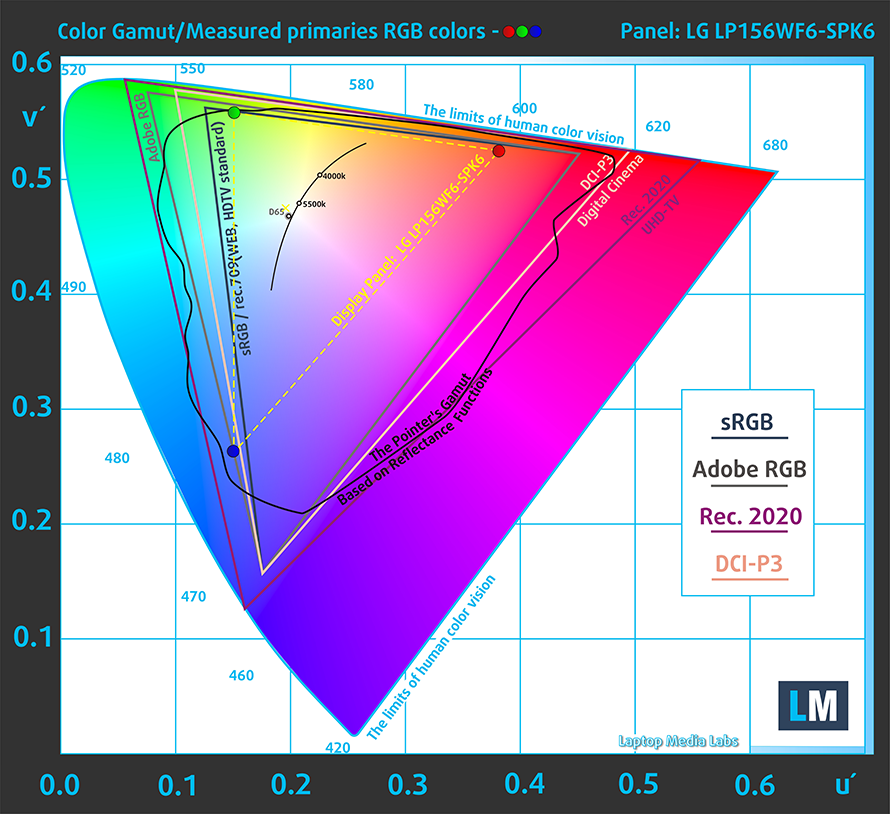
Our “Design and Gaming” profile delivers optimal color temperature (6500K) at 140 cd/m2 luminance and sRGB gamma mode.
We tested the accuracy of the display with 24 commonly used colors like light and dark human skin, blue sky, green grass, orange etc. You can check out the results at factory condition and also, with the “Design and Gaming” profile.
The next figure shows how well the display is able to reproduce really dark parts of an image, which is essential when watching movies or playing games in low ambient light.
The left side of the image represents the display with stock settings, while the right one is with the “Gaming and Web Design” profile activated. On the horizontal axis, you will find the grayscale and on the vertical axis – the luminance of the display. On the two graphs below you can easily check for yourself how your display handles the darkest nuances but keep in mind that this also depends on the settings of your current display, the calibration, the viewing angle and the surrounding light conditions.

Response time (Gaming capabilities)
We test the reaction time of the pixels with the usual “black-to-white” and “white-to-black” method from 10% to 90% and reverse.
We recorded Fall Time + Rise Time = 29 ms.

PWM (Screen flickering)
Pulse-width modulation (PWM) is an easy way to control monitor brightness. When you lower the brightness, the light intensity of the backlight is not lowered, but instead turned off and on by the electronics with a frequency indistinguishable to the human eye. In these light impulses, the light/no-light time ratio varies, while brightness remains unchanged, which is harmful to your eyes. You can read more about that in our dedicated article on PWM.
We didn’t record any PWM across all brightness levels, which means that the display is safe to use for long periods of time in this regard, even by users with sensitive eyes.
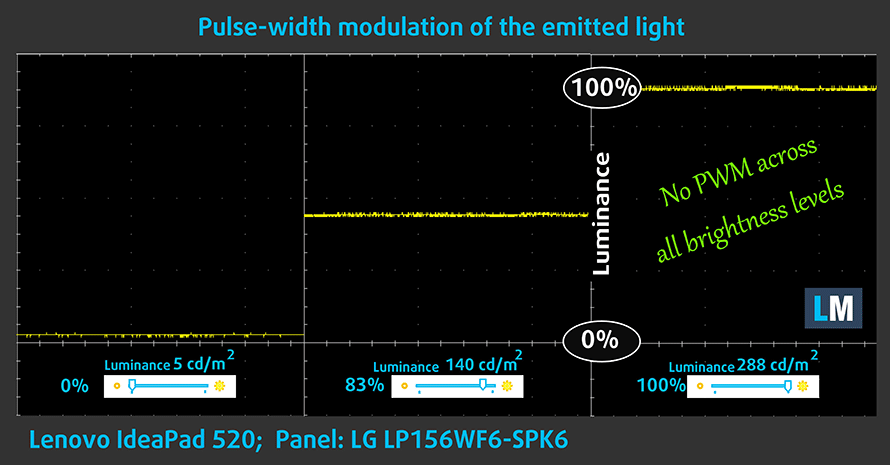
Blue light emissions
Installing of our Health-Guard profile not only eliminates PWM but also reduces the harmful Blue Light emissions while keeping the colors of the screen perceptually accurate. If you’re not familiar with the Blue light, the TL;DR version is – emissions that negatively affect your eyes, skin and your whole body. You can find more information about that in our dedicated article on Blue Light.
You can see the levels of emitted blue light on the spectral power distribution (SPD) graph.
Conclusion
Given the price tag of the laptop, we can’t really expect outstanding image quality but we do appreciate that Lenovo has included an IPS panel instead of TN one. And despite the limited sRGB coverage and relatively low maximum brightness, the screen fits perfectly into the price tag while offering high contrast ratio and lacks PWM across all brightness levels.
Buy our display profiles
Since our profiles are tailored for each individual display model, this article and its respective profile package is meant for Lenovo Ideapad 520 configurations with 15.6″ LP156WF6-SPK6 (FHD, 1920 × 1080) IPS screen and the laptop can be found at Amazon: Buy from Amazon.cn (#CommissionsEarned)
*Should you have problems with downloading the purchased file, try using a different browser to open the link you’ll receive via e-mail. If the download target is a .php file instead of an archive, change the file extension to .zip or contact us at [email protected].
Read more about the profiles HERE.
除了获得高效和健康友好的配置文件,购买LaptopMedia的产品,您还可以支持我们实验室的发展,我们在实验室测试设备,以产生最客观的评论。

办公室工作
Office Work应该主要由那些花大部分时间看文本、表格或仅仅是浏览的用户使用。该配置文件旨在通过保持平坦的伽玛曲线(2.20)、本机色温和精确的色彩来提供更好的清晰度。

设计与游戏
本资料针对专业处理色彩的设计师,以及游戏和电影。设计与游戏》将显示面板发挥到了极致,使其在白点D65的网页和高清电视的sRGB IEC61966-2-1标准中尽可能准确。

以33%的折扣获得所有3份资料
Sound
The sound quality is decent without any noticeable distortions in the low, mid and high frequencies.

Specs sheet
The current specs sheet is for this particular model and configurations may differ depending on your region
Lenovo Ideapad 520 (15") 技术规格表
Lenovo Ideapad 520 configurations
Software
We used the pre-installed Windows 10 for the writing of this review but if you wish to perform a clean install of the OS, we suggest downloading all of the latest drivers from Lenovo’s official support page.
Battery
We have some good news and some bad news regarding battery life. The good news is that there’s a modest decrease in power consumption resulting in slightly longer battery life, especially noticeable during video playback. However, it’s still not enough to call it even average battery performance. The small XXWh battery is too small to keep the lights on for longer than a few hours. We also suspect that the battery life has increased mostly due to the TN panel as it’s more energy-efficient than the IPS one found in the previous generation.
As always, we’ve tested the device with the usual settings – Wi-Fi constantly running, Windows battery saving feature turned on and screen brightness set to 120 cd/m2.
为了模拟真实情况,我们使用自己的脚本自动浏览了70多个网站。
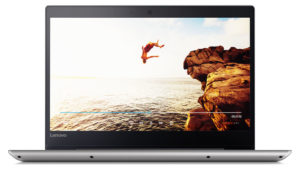


对于这样的每一次测试,我们都使用相同的高清视频。



我们循环使用F1 2017的内置基准,以模拟现实生活中的游戏。



CPU – Intel Core i5-8250U
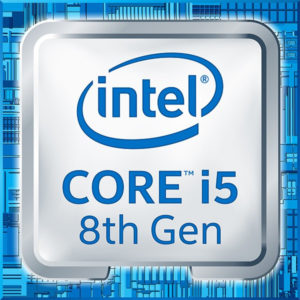 The Core i5-8250U is one of the first (along with the Core i7-8550U from the same generation) ULV (ultra-low voltage) processors from Intel to feature not two but four cores. It’s part of the 8th Generation (Kaby Lake Refresh) and on contrary to the previous generations, the Turbo Boost range is pretty wide now.
The Core i5-8250U is one of the first (along with the Core i7-8550U from the same generation) ULV (ultra-low voltage) processors from Intel to feature not two but four cores. It’s part of the 8th Generation (Kaby Lake Refresh) and on contrary to the previous generations, the Turbo Boost range is pretty wide now.
The base frequency is 1.6 GHz and can go up to 3.4 GHz for a short period of time before stabilizing somewhere in between during continues loads. This also means that the single-core performance is really good. The rest of the features and specs, however, remain mostly the same with support for dual-channel DDR4-2400/LPDDR3-2133 memory, 14nm FinFET manufacturing process and the same integrated graphics chip, although re-branded now as Intel UHD Graphics 620.
The whole SoC along with the dual-channel memory is rated at 15W TDP but depending on the usage scenario, cooling capabilities and the configured TDP from the OEM, the TDP can vary from 7.5W up to 25W.
You can browse through our top CPUs ranking: http://laptopmedia.com/top-laptop-cpu-ranking/
Here you will find other useful information and every notebook we’ve tested with this processor: http://laptopmedia.com/processor/intel-core-i5-8250u/
Fritz
Fritz is a chess benchmark that tests the computing capabilities of the CPU with various chess moves. The Intel Core i7-7700HQ scored 13.711 million moves per second. In comparison, one of the most powerful chess computers, Deep(er) Blue, was able to squeeze out 200 million moves per second. In 1997 Deep(er) Blue even beat the famous Garry Kasparov with 3.5 to 2.5.
GPU – NVIDIA GeForce MX150 (2GB GDDR5)
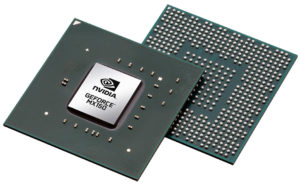 The GeForce MX150 is an entry-level mobile card that is part of the latest NVIDIA Pascal lineup of GPUs, based on the GP108 chip paired with 2GB of GDDR5 memory via 64-bit interface. The GPU is the successor of GeForce 940MX and it was announced in Q2 of 2017.
The GeForce MX150 is an entry-level mobile card that is part of the latest NVIDIA Pascal lineup of GPUs, based on the GP108 chip paired with 2GB of GDDR5 memory via 64-bit interface. The GPU is the successor of GeForce 940MX and it was announced in Q2 of 2017.
The GeForce MX150 operates at a relatively high base frequency of 1469 MHz, while the Boost frequencies can go up to 1532 MHz. The GPU incorporates 384 shader units (CUDA cores) while the memory is clocked at 6008MHz (effective). These specs ensure a significant performance boost over the previous generation of Maxwell GPUs. The TDP of the GPU is lower than the last generation GTX 950M and even the GTX 1050 – 25W compared to 40W for the two models above. Performance-wise, the GeForce MX150 should be similar to the desktop GeForce GT 1030.
Along with all the power consumption and performance improvements, the GPU now supports essential features like Multi-Projection, VR Ready, G-SYNC, Vulkan and Multi-Monitor.
Check the prices of all notebooks equipped with NVIDIA GeForce MX150: Buy from Amazon.cn (#CommissionsEarned)
Gaming tests

| CS:GO | HD 768p, Low (Check settings) | HD 768p, Medium (Check settings) | HD 768p, MAX (Check settings) |
|---|---|---|---|
| Average FPS | 131 fps | 110 fps | 77 fps |

| Grand Theft Auto V (GTA 5) | HD, Low (Check settings) | HD, Medium (Check settings) | HD, Very High (Check settings) |
|---|---|---|---|
| Average FPS | 100 fps | 50 fps | 25 fps |
Temperatures
Of course, we take the temperature tests to the extreme since the regular user won’t be able to reach 100% CPU and GPU load for such long periods of time. Even when gaming, the hardware isn’t so hard pressed. However, it remains the most reliable way to test out the effectiveness and capability of the cooling system, especially in the long run.
We started off with 100% CPU load for about an hour and things seemed to be normal at first. The CPU reached its maximum potential for a while (around 3.4 GHz) but then started to fluctuate quite a bit between its base operating frequency of 1.6 GHz and around 2.4 GHz.
But when we turned on the GPU stress test, the processor remained stable at 1.6 GHz while the GeForce MX150 ran a little below its base operating frequency but at more than reasonable temperature.
Expectedly, the surface of the machine remained cool with the only warm spot being in the upper left corner near the Esc key.
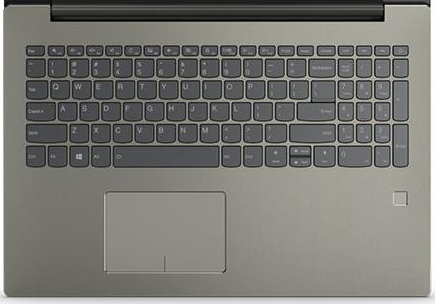
Verdict
Priced just a little higher than the Ideapad 320, the Ideapad 520 aims to bring a bit better user experience for the asking price but to be honest, we can barely feel the difference. In fact, the Ideapad 520s with its relatively affordable price undermines the existence of the Ideapad 520 in the first place.
In any case, there are a few features that are worth mentioning like the inclusion of an IPS panel with high contrast and no PWM, good input devices and pretty stable chassis. Most of these weren’t inherent to the previous Ideapad 510 so it’s definitely a nice upgrade, yet it’s hard to recommend over notebooks in the same price range. The first that comes to mind is Acer’s Aspire 5 (A515-51G) notebook that features outstanding display and pretty much the same hardware.
But what are the biggest pitfalls here? The first thing that comes to mind is the limited sRGB coverage of the display and the relatively low maximum brightness. Secondly, the battery unit isn’t enough to support the notebook for any longer than a few hours at most. But more importantly, the M.2 SSD slot is obstructed by the optical drive so you will have sacrifice the latter if you want speedy PCIe NVMe SSD.
In the end, we strongly recommend opting for the slightly (but definitely worth) more expensive Ideapad 520s or settle for the 15-inch Ideapad 320s for example. The best choice in this market segment, however, remains Acer’s Aspire 5 series that come in 15 and 17-inch flavors.
Pros
- Decent build
- Good input devices
- IPS panel with high contrast
- The screen doesn’t use PWM for regulating screen brightness
Cons
- The M.2 SSD slot is unusuable unless you remove the optical drive
- The screen has limited sRGB coverage and relatively low maximum brightness
- Poor battery life
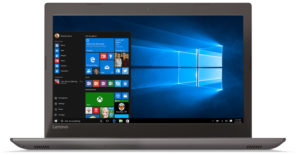

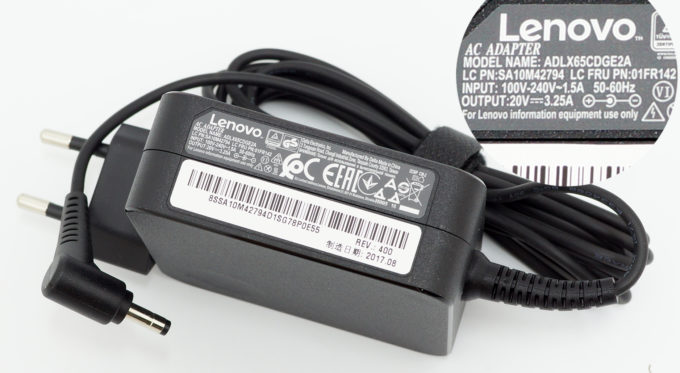
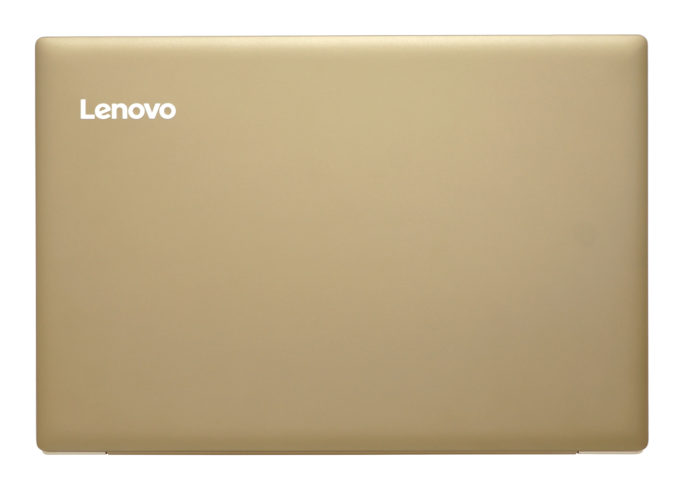
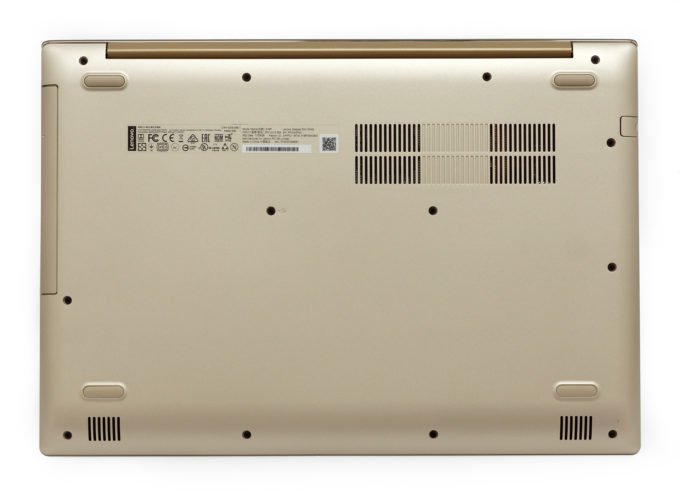
















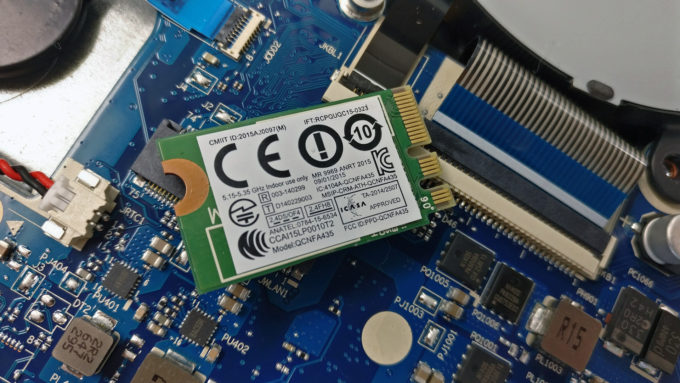






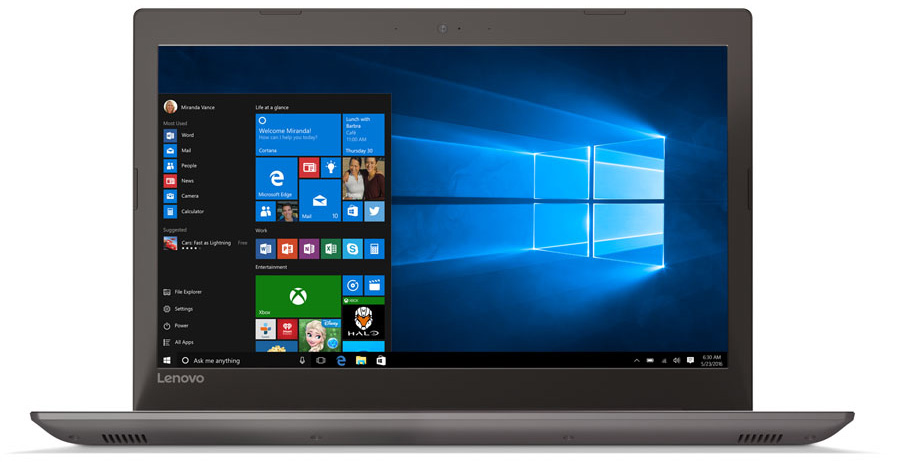










so thx for this review, can i connect M.2 SSD Sata in place of Optical drive or only M.2 PCIe SSD supported? many thx
Yes, you can insert M.2 SATA SSD.
As you know M.2 expansion cards is 22 mm wide, with varying lengths of 30, 42, 60, 80 and 110 mm, and the common one is 22×80 mm. I think you made your test using 22×80 M.2 SSD, my question could you make the test using 22×42 mm M.2 PCIe SSD or put a paper with this size 22×42 mm and put the DVD drive to check if any obstruction from the DVD drive will happen. Please let me know. Another point Please advise which one to choose from both options Lenovo Ideapad 520 (i7-8550U/16/2TB/NVIDIA MX150 4GB) +DVD+ 128GB PCIe… Read more »
Hi Dear for Lenovo Ideapad 520 disassembly or upgrade options please check this youtube video https://www.youtube.com/watch?v=7YZxMWEP7G0 As for Lenovo IP 520 vs Dell inspiron 15 5570, I think NVIDIA MX150 4GB is way better then Radeon 530 4GB. But battery timing of dell Inspiron 15R 5570 is better then Lenovo IP 520. Dell Inspiron 15R 5570 has a TN panel, Lenovo IP 520 has an IPS panel. In Lenovo IP 520 4GB RAM is sorded on board and 4GB RAM in SODIMM Slot. Dell Inspiron 15R 5570 has 2 RAM slots. Both have approx same price range. One more things… Read more »
Does it is most suggestable laptop at this price range or I should go for other.please help.
Hi, Can we upgrade Lenovo IP 520 battery to 4 cell battery?
Thanks
How is solved Twisted screw and broken inside the frame
does it support m.2 pcie ssd running on nvme protocol . And how to do so can you elaborate